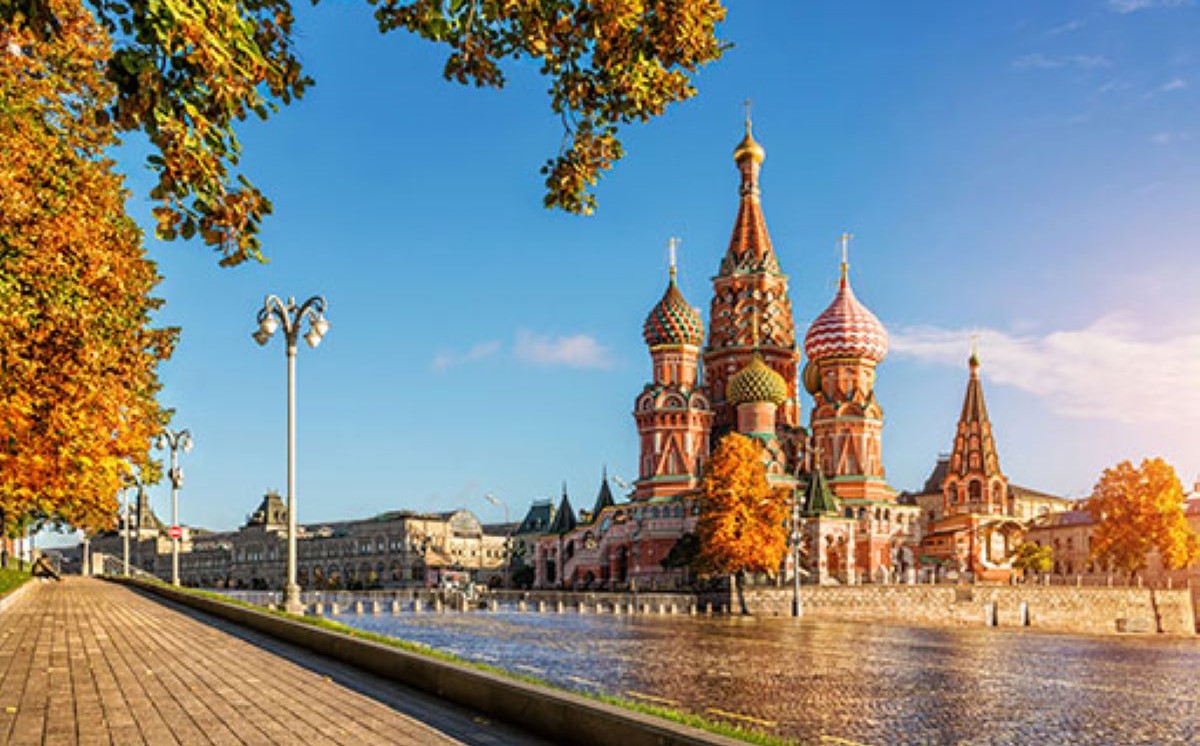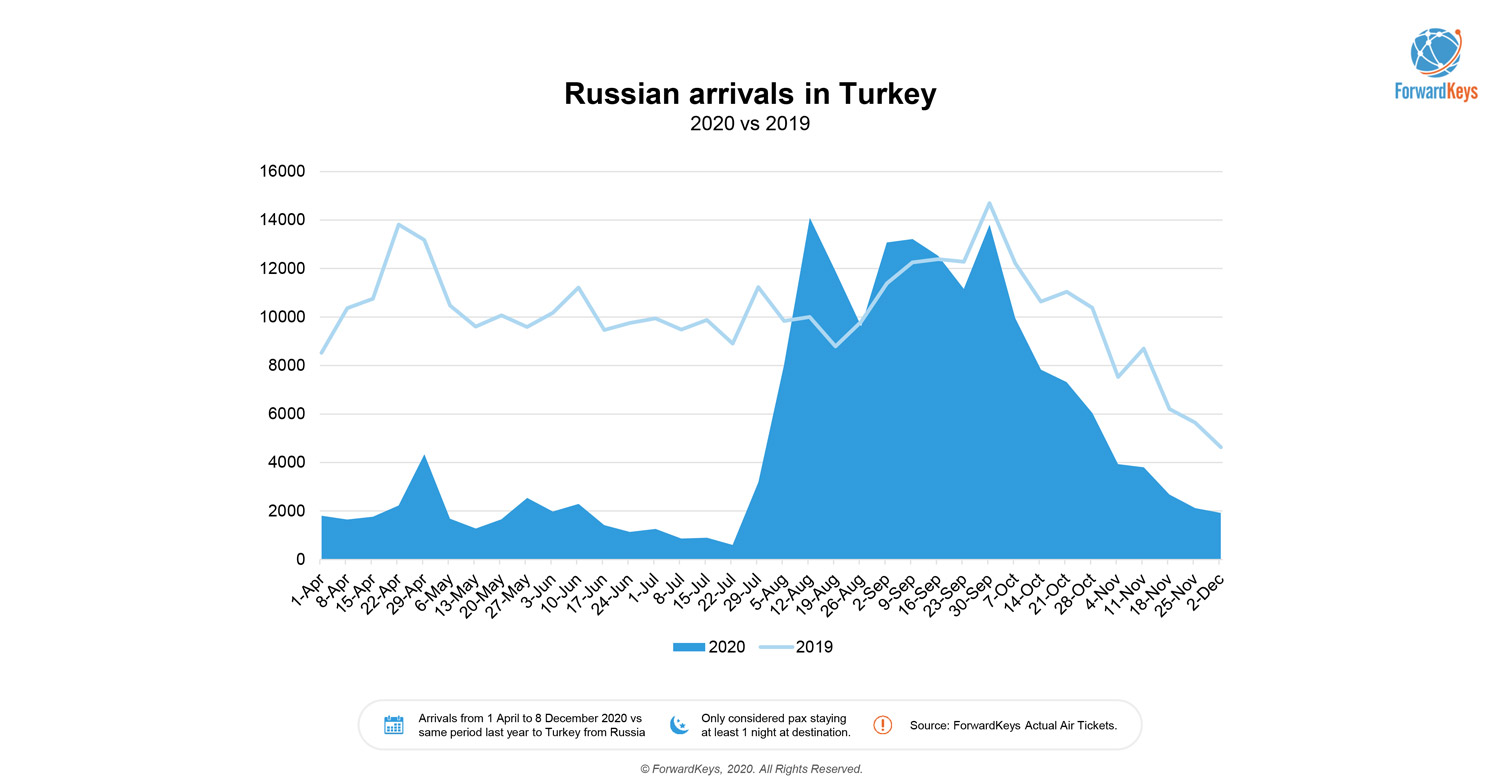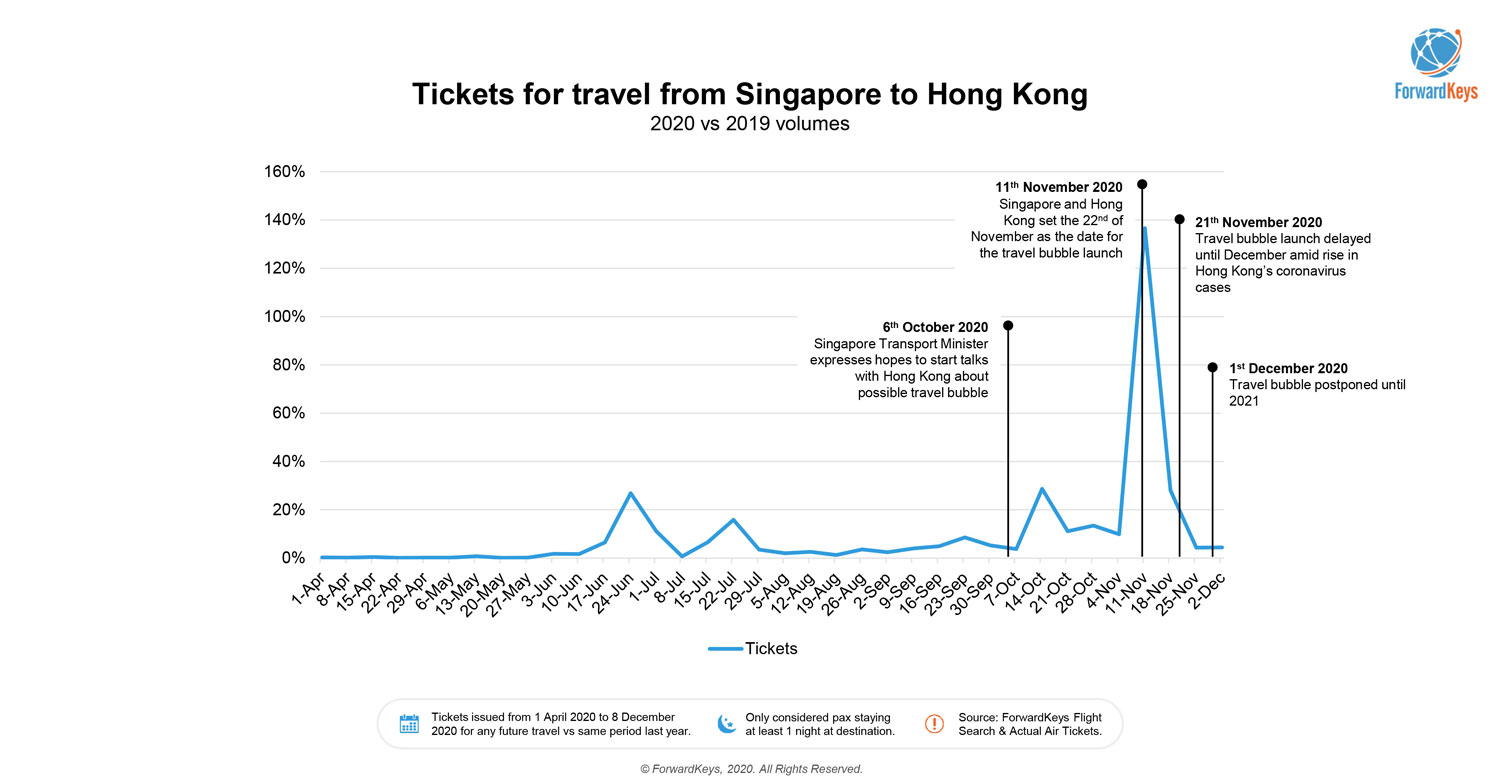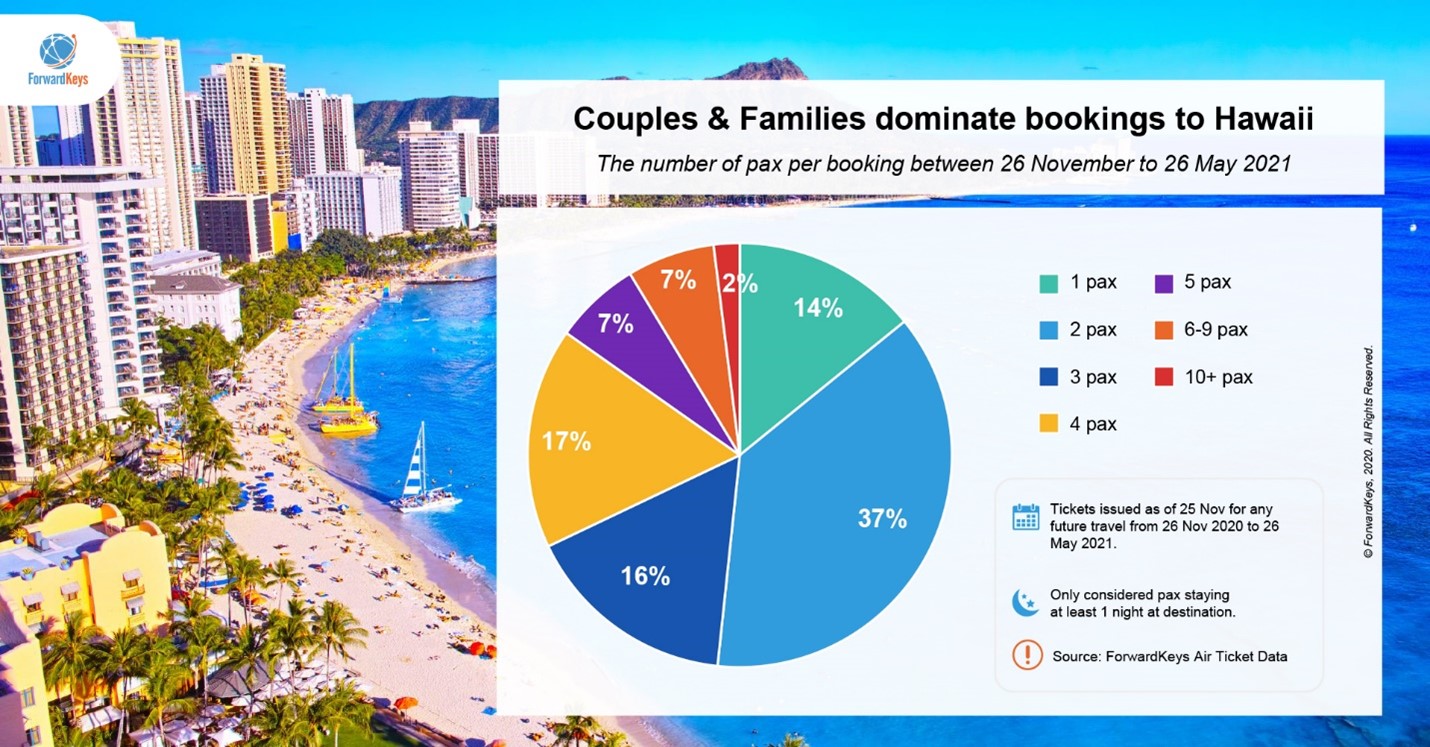
With the New Year fast approaching and the announcement of a new travel bubble between Japan and Hawaii, the team at ForwardKeys thought to post a new blog regarding the highs and lows of the recent travel bubbles. Here’s what we’ve learned.
“Both sides need to get involved to ensure its success and continuity,” says Olivier Ponti, VP of Insights at ForwardKeys. “Simply take a look at our travel figures and it only emphasises this.”
Bubble 1: Russia – Turkey
Here’s a travel trend that seemed to fly under the radar for many – the successful travel bubble between Russia and Turkey.
The European summer season was plagued with stop/start travel restrictions, which greatly benefited this Mediterranean nation which borders Asia Minor: Turkey. Not only did traveller numbers from the UK increase but affluent Russians diverted their attention from Dubai and Montenegro this summer for Bodrum, Marmaris, and Cesme.

“What was encouraging to see on this occasion was the swift actions both governments made and aviation authorities to increase seat capacity upon signing the bilateral travel agreement,” adds Ponti.
Bubble 2: Hong Kong – Singapore
“This air bubble had great potential that sadly didn’t come to fruition due to the rising cases of Covid-19 presented on the unsuspecting authorities,” says Ponti.

Upon the announcement on 15th October that Hong Kong and Singapore had reached an in-principle agreement to establish a bilateral Air Travel Bubble (ATB) allowing leisure travel to restart in November, an immediate release of pent-up demand was triggered. In the week that followed, flight searches for travel from Singapore to Hong Kong, which had been flat since the beginning of the COVID-19 crisis, soared to 50% of 2019 levels, while tickets issued jumped by 30%.
“This air bubble failed not due to the lack of willingness from the travellers, rather for not having a Plan B in place for new Covid-19 outbreaks.”
Bubble 3: Japan – Hawaii
Visitors from Japan make up a substantial part of the travel and tourism industry for Hawaii, so the latest air bubble announcement made on October 27 came as no surprise.
The Hawaii Department of Health (DOH) approved Japan’s Testing Procedure for Pre-Travel Testing Program, effectively announcing the travel bubble between Hawaii and Japan.
However, here is the catch: Japanese nationals travelling abroad are still subject to a 14-day quarantine upon their return to the country. The Hawaii Tourism officials hope “this will be a small price to pay for a Hawaii Holiday”. Indeed, tickets issued have been on an incline since early November as per the following graph.
“An additional fact to mention in this case is despite the lack of reciprocity and the need to quarantine upon returning home, Japanese travellers are travelling in larger numbers to Hawaii. Our data shows couples and groups of 3 or 4 people topping tickets issued for travel from November 26 – May 26, 2021,” adds Ponti.

As the year 2020 ends and 2021 fast approaches, the development of new air bubbles will be a phenomenon to watch and learn from if international travel is to be reactivated sooner than later.
To learn more about the data behind this article and what ForwardKeys has to offer, visit http://forwardkeys.com.







Sign up to receive our stories in your inbox.
Data is changing the speed of business. Investors, Corporations, and Governments are buying new, differentiated data to gain visibility make better decisions. Don't fall behind. Let us help.













Sign up to receive our stories in your inbox.
Data is changing the speed of business. Investors, Corporations, and Governments are buying new, differentiated data to gain visibility make better decisions. Don't fall behind. Let us help.





